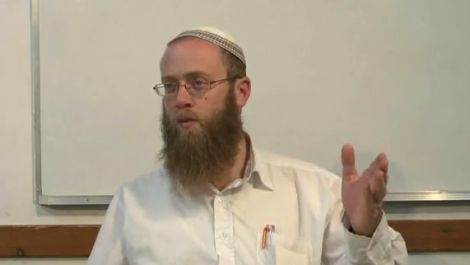Beit Midrash
- Sections
- Chemdat Yamim
- Parashat Hashavua
- Torah Portion and Tanach
- Tanach
- Rut
The S’fat Emet (640) says we read Ruth on Shavuot to teach that concerning Torah, the study is not the main thing but action is (Avot 1:15). He continues: "By involvement in Torah, man’s spirit is fixed, and he can then fix his actions." Again, Ruth seems to not fit so well into the description, as her wonderful actions preceded her involvement in Torah.
How, indeed, did Ruth come to Judaism? The simple (and, I submit, the correct) reading of the p’sukim is that she was drawn to Naomi’s personality and wanted to follow her. The crux of the desire for conversion is included in Ruth’s speech of: "Where you shall go I shall go, and where you shall sleep I will sleep; your nation is my nation and your G-d is my G-d. Where you shall die, I will die, and there shall I be buried …" (Ruth 1:16-17). While this seem to indicate that the conversion was highly based on a personal connection to Naomi,Chazal (Yevamot 47b) saw in each element of these p’sukim an acceptance of a different set of halachot.
Based on the above, we will explain Ruth’s impetus for conversion as follows. Ruth viewed Naomi as an ideal human being – a kind, devoted woman with beautiful piety. Ruth was drawn to Naomi indeed, but not for her wit or her money (the latter, she no longer had), but by the Torah within Naomi, which Ruth understood was the source of her piety and refinement. Thus, when Ruth proclaimed she wanted to follow Naomi in her various stations in life, Chazal viewed it as an acceptance of the related Torah values that these engendered.
Now we can appreciate the similarity between Ruth’s conversion and that of Bnei Yisrael. Some (see Meshech Chochma, Devarim 33:4) explain that the mountain held over Bnei Yisrael’s head was not a physical threat but a powerful draw to Hashem that they could not overlook. To a great extent, that is what Ruth, with her special sensitivity, experienced vis-à-vis Naomi. When the Sefat Emet speaks of the Torah reflecting on the actions, it is not Ruth’s actions, at least not originally. Rather, Naomi’s actions were reflective of the Torah she absorbed. It was Naomi’s Torah actions, which were mirrored in Ruth’s image, that are the Torah of action that connects Megillat Ruth to Shavuot.
May we learn Torah in a way that improves our actions and improve our actions in a way that glorifies the Torah we learn and practice.

The Intersection of the Three Eichas
Rabbi Moshe Erenreich | 6 Av 5767

“Yerushalayim, the City That Was Connected Together”
Rabbi Yossef Carmel | 29 IYAR 5769

Parashat Hashavua: From Paroh to Hamas and Iran – In Those Days at this Time
Rabbi Yossef Carmel | Kislev 5786

Parashat Hashavua: The Symbolism of Mashiv Haruach U’morid Hageshem
Rabbi Yossef Carmel | Tishrei 5786

Rabbi Daniel Mann

Pay for Overtime on Shabbat
5773

Tazria Metzora Question
5772

Giving an Envelope on Shabbat to Use for Donations
5773





















